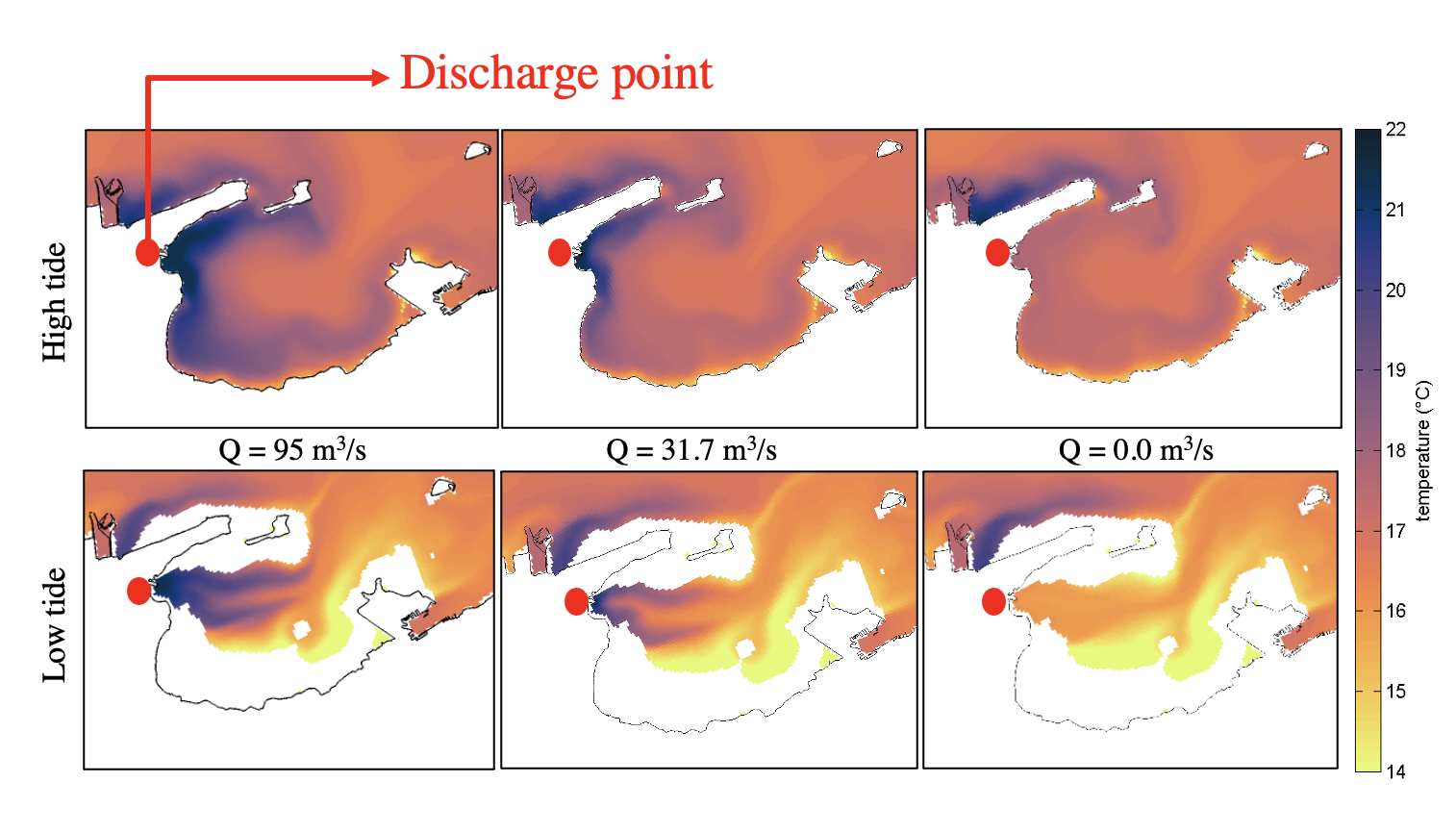Nada Alsulaiman
Numerical modelling of the thermal effluents of power plants in a shallow, semi-enclosed bay
Started: February 2021
Supervisor: Piggot, M; van Reeuwijk, M.
Description of Research
This study explores the possibility of improving the accuracy of numerical modelling of seawater temperature through data assimilation of remote sensing observations and in-situ measurements. The study focuses on modelling the excess temperature caused by the discharge of heated waters from power plants into coastal seas. A three-dimensional hydrodynamic model is constructed to simulate the mixing and transport of the thermal effluents into a semi-enclosed, shallow bay. Due to difficulties in obtaining measurements, discharge points are commonly represented in the model as source points with constant values prescribing parameters that are time-varying in nature, such as discharge rate (m3/s). This study proposes a framework that combines two levels of thermal infrared remote sensing data: satellite and low-altitude drone imageries, along with in-situ observations to derive an improved representation of the discharge points in the model and enhance the characterization of the simulated thermal plumes.

Background
Nada holds a BSc and MSc in Civil Engineering from Kuwait University. In 2015, she joined the Kuwait Institute for Scientific Research (KISR), where she currently works as a Research Associate at the Coastal Management Program (CMP).
Nada Alsulaiman
Fluid Mechanics Research Student
Department of Civil & Environmental Engineering
Imperial College London SW7 2AZ
n.alsulaiman20@imperial.ac.uk


